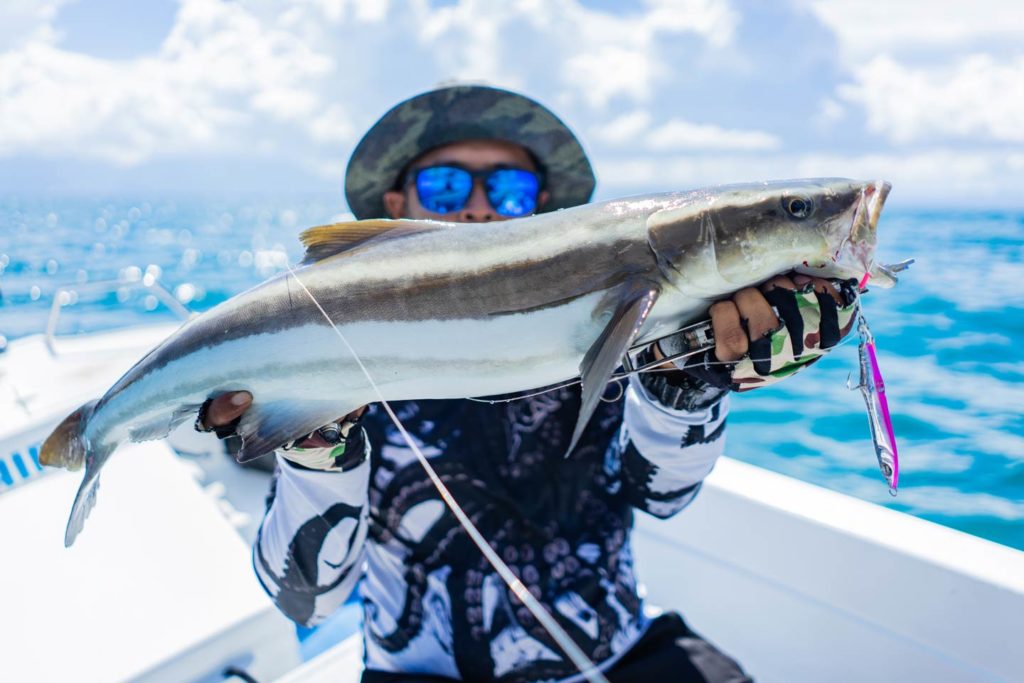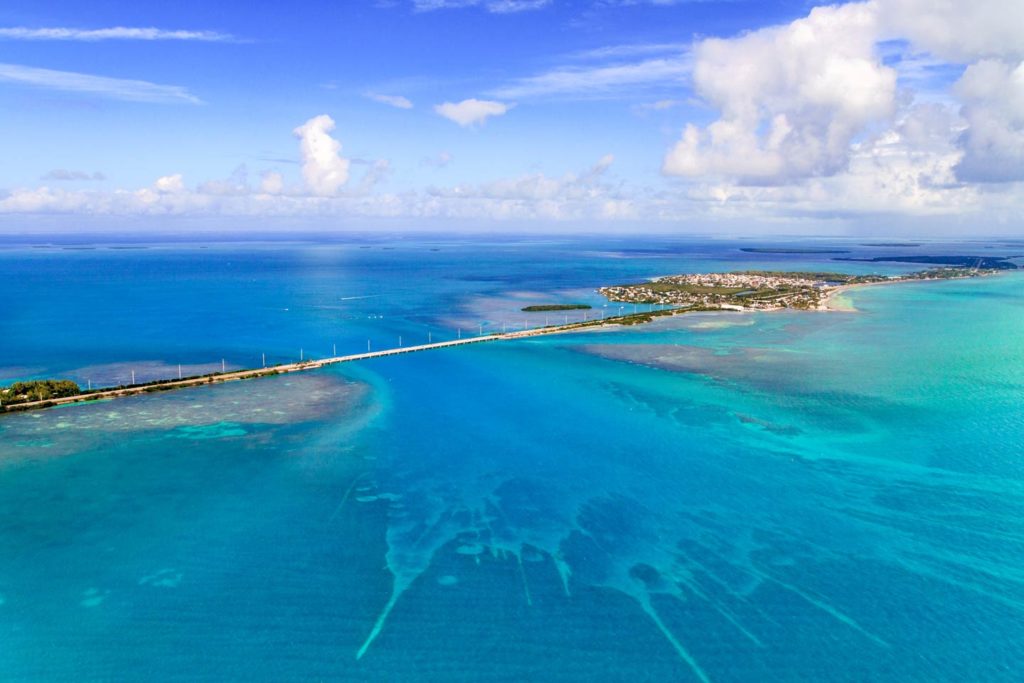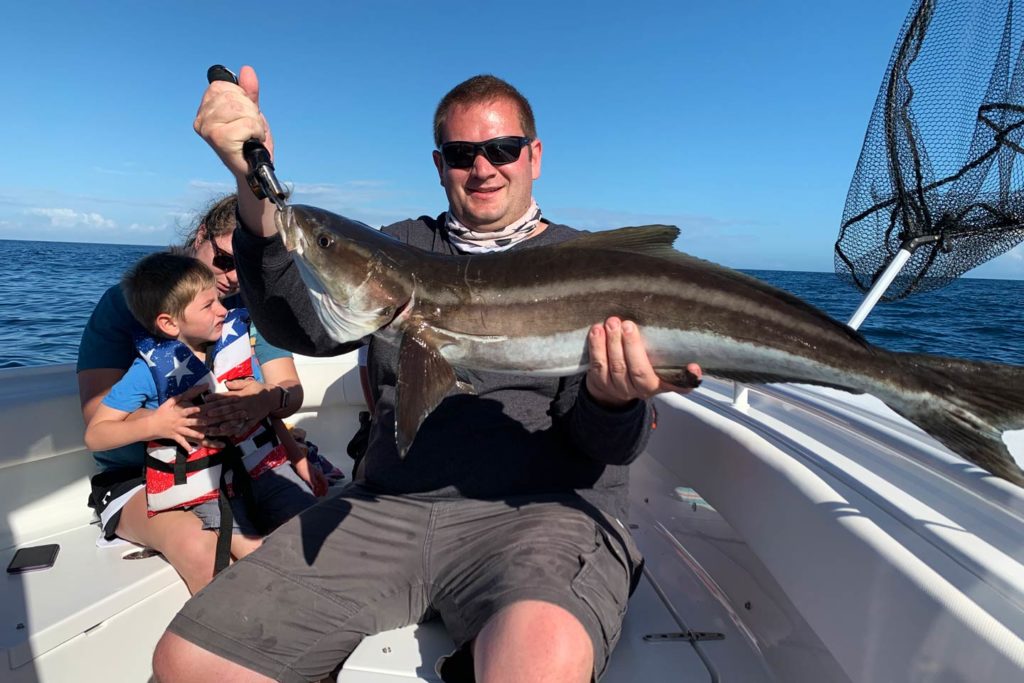So you want to go Cobia fishing in Florida. Good choice! These fish are a great target for a number of reasons. First of all, they’re fairly easy to catch, meaning they’re a suitable target for both novices and expert anglers. And secondly, they taste great and there are plenty of them. This makes Cobia a delicious, healthy, and sustainable food choice.
Cobia are also easy to identify, although you could mistake them for small Sharks at first glance. However, apart from sharing horizontal pectoral fins and similar colorations, the two aren’t related. In fact, Cobia are one of a few fish that have no close relatives at all! They’re solitary swimmers, but you’ll find them in tropical and subtropical waters worldwide – including most of Florida.
In this blog, we’ll highlight some of the best places to hook Cobia in the “Sunshine State,” how you can land your next prized catch, and a few rules and regulations to keep in mind. Let’s dive in!
How to find Cobia and what do they eat?
Cobia feed on a diet consisting of Blue Crabs, Stingrays, and bait fish including pinfish and eel. This protein-rich diet plays a big part in why Cobia grow so fast. In some cases, fish will measure over 40 inches in just two years.
Their diet also tells us a lot about where we can find them. Cobia are very aggressive eaters so you’ll often find them around structures that hold a lot of bait fish. These could be buoys, navigational markers, or both nearshore and offshore reefs and wrecks. To sum it up, any large structure where bait fish gather is usually a good place to cast a line.
Recent Florida Catches
Fresh fishing reports from anglers
When and where can you catch Cobia in Florida?
The short answer is, pretty much everywhere! Cobia are warm water fish, so you’ll find them year-round in the south of Florida. If you’re fishing the Atlantic coast, however, there are some migration patterns you should keep in mind. Below, we’ll get into the specifics.
- The Keys: This is where Atlantic Coast Cobia hang out during the winter. You’ll find them in great numbers around Key West Harbor and the surrounding wrecks from December–April.
- Atlantic Coast: Come late March, Cobia start to make their way away from the Keys and up the coast. They’ll hit Daytona Beach first, before moving north towards Jacksonville. In the March–June period, Cobia fishing in Florida’s northernmost coastal cities hits its peak.
- Gulf of Mexico: You’ll find Cobia in the Gulf year-round, but there are two peak seasons to be aware of. The offshore waters around the Panhandle are brimming with fish in early spring, whereas the nearshore waters along the Gulf’s entire coast are best in summer.
- Sandbars: If you’re looking for inshore Cobia fishing action, hit the sandbars around Tampa Bay and Charlotte Harbor in spring. Migrating Cobia make a fantastic run along the beaches, creating excellent opportunities for fly anglers and sight fishers.
How do you fish for Cobia?
Now that you know where to look for your prized fish, it’s time to secure a hook up. We’ll cover the different techniques you can use, what gear you need, and how to seal the deal after you’ve gotten a bite.
Spinning and Casting
One of the reasons Cobia fishing is so accessible lies in the fact you don’t need a complicated setup. Traditional spinning tackle is arguably the most efficient way to land fish. If you’re just getting started, gear up with a 7’ medium-weight spinning rod. After you’ve been out a few times, you can level up to a heavier rod and explore deeper waters.
Casting for Cobia is also a great way to test out your light tackle skills – especially during migration periods. The fish swim very close to the surface at this time, and sight casting becomes the name of the game.
The next things you’ll need to take into account are bait and lures. Like we mentioned earlier, Cobia like to feed on Blue Crabs and bait fish like eel. As such, you’ll have most luck using these as live bait. If you’d prefer to use artificial lures, go for bucktail jigs in contrasting colors, diving plugs in natural bait fish colors, or Texas-rigged plastic eels and worms.
While you don’t necessarily need a boat to go spin fishing for Cobia, it will make things easier. You’ll have easier access to the structures they like to hang out around, as well as deeper waters. These fish are voracious feeders and while they latch on to just about anything, take care with how you present your bait. Aim right in front of your target’s nose for the most success.
Fly Fishing
If you’re looking for more of a challenge, you can try fly fishing for Cobia. This method will only work when the Cobia are inshore and close to the surface. This usually happens in spring, right around the time when the fish are spawning. Think of it as great practice for the upcoming summer Tarpon season!
If you’re aboard a boat, cut the motor and drift over to any structures like bridge pilings or channel markers. Gear up with a 10–12 wt rod and Deceiver flies and cast towards your sighted Cobia. Another method you can try is close to an already-hooked Cobia. This commotion will arouse other fish nearby, upping your chances of a double bite.
Landing a Cobia after You’ve Hooked It
Cobia are surprisingly strong and very stubborn. Chances are, your fish will try and make a run for it as soon as it’s hooked. Allow your Cobia to get tired by loosening the drag and continuing your battle. Once the fish has exhausted itself, you’ll get it onto the boat much more easily. But it doesn’t end there.
Once you’ve boated your Cobia, it will continue to move and jump around ferociously until it’s used up the last of its strength. Leave room for it and take extra care to avoid any damage to your equipment. If you plan on keeping the fish, it’s best to gaff it and get it into the catch box as quickly as possible.
Anything else I need to know about Cobia fishing in Florida?
The final thing to take into account before you head out to fish for Cobia in Florida is a few rules and regulations. The season for these fish is open year-round and there are no significant restrictions you need to be aware of. This applies to both Gulf and Atlantic waters. There are, however, a few differences concerning bag and size limits you should keep in mind.
The minimum size limit for Cobia in both Atlantic and Gulf state waters is 36 inches. You can keep one fish per day or two fish per vessel.
In federal waters, rules are the same. The minimum size stays 36 inches, and the daily limit is one fish per day or two fish per boat. These rules are subject to change so keep an eye on the FWC’s Cobia page.
Cobia Fishing in Florida FAQs
Cobia Fishing in Florida: Good Fun for Everyone
The delicious flavor, accessibility, and hard-fighting spirit of Cobia make them a firm favorite for anglers across the board. And there’s no better place than Florida to fish for them. Available year-round, across both the Gulf and Atlantic coast, Cobia are the fish you can always count on.
Have you ever gone Cobia fishing in Florida? What’s your preferred technique? Let us know in the comments below – we love to hear from you!










